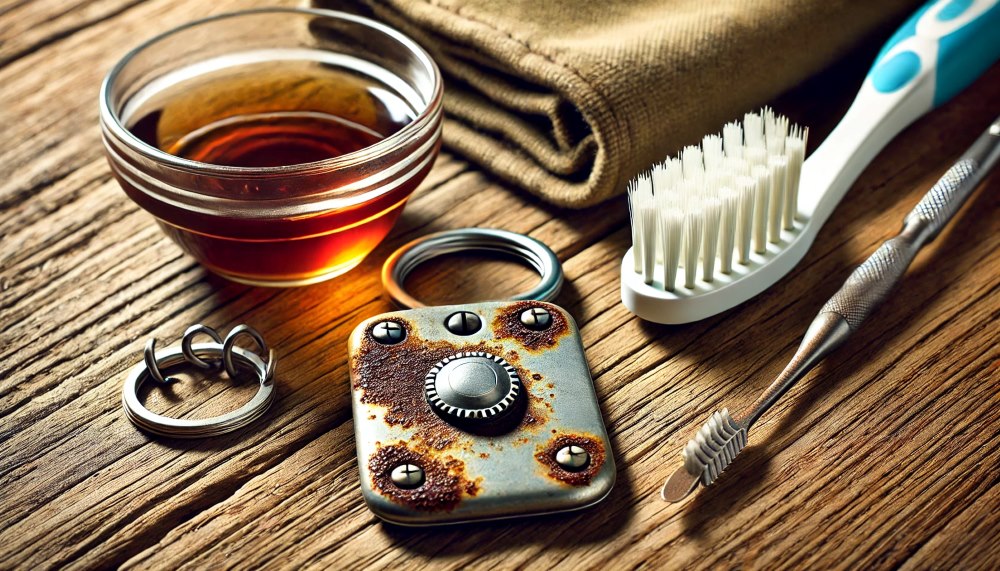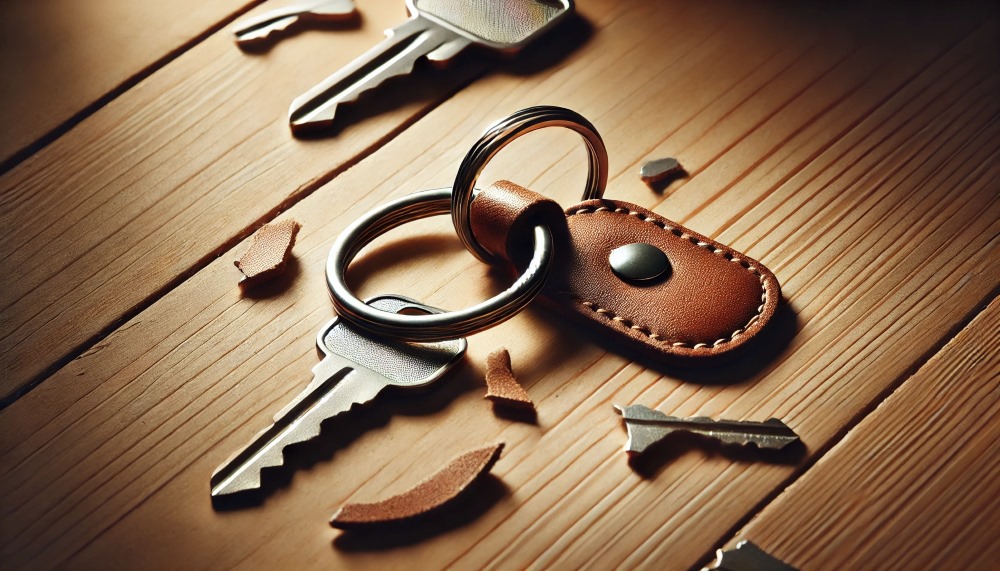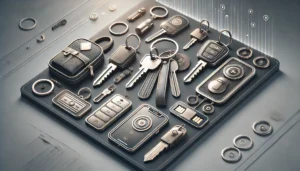Keyrings
What Are Some Common Problems With Keychains
Keychains are a small but vital part of our daily lives. We use them to organize and carry our keys. But have you ever stopped to think about what are some common problems with keychains? These everyday items, designed for convenience, can sometimes become a source of frustration. From flimsy rings to designs that simply don’t work well, keychains can present a surprising number of issues. This article will explore some of the most common problems people encounter with keychains. We will look at why these problems occur and offer some tips on how to choose better keychains and avoid these frustrations.
What Are Some Common Problems With Keychains – Durability Dilemmas: When Keychains Fall Apart
One of the most frequent and annoying issues with keychains is their lack of durability. Many keychains, especially those that come free or are cheaply made, are simply not built to last. They often succumb to daily wear and tear much faster than we would like. This lack of durability manifests in several ways.
Broken Rings and Clasps
The most common point of failure is often the split ring or clasp that holds the keys together. These components are frequently made from thin, weak metal. Over time, the constant opening and closing, the weight of the keys, and general movement can weaken the metal. Eventually, the ring can bend open, snap, or the clasp can break. This results in keys falling off, sometimes unnoticed, leading to lost keys and security concerns. Imagine the frustration of realizing your house keys are missing because your keychain ring gave way!
Material Degradation
The materials used to make the keychain itself can also degrade over time. Plastic keychains can become brittle and crack, especially in cold weather or under stress. Leather keychains can dry out, crack, and the stitching can come undone. Even metal keychains, if made from low-quality alloys, can rust, corrode, or bend out of shape. The decorative elements, like charms or beads, can also detach or break. This material degradation not only makes the keychain look worn and unattractive but also compromises its functionality.
Weak Construction and Assembly
Beyond the materials themselves, the way a keychain is constructed plays a big role in its durability. Poorly assembled keychains with weak joints, flimsy connections, or inadequate stitching are prone to falling apart. Sometimes, the decorative elements are glued on poorly and detach easily. Keychains that are mass-produced quickly and cheaply often sacrifice quality in favor of speed and cost, leading to these construction issues. This results in a product that is simply not robust enough for everyday use.
To mitigate these durability problems, it is worth investing in keychains made from higher-quality materials. Look for keychains with robust split rings made of strong steel. Consider materials like stainless steel, brass, or good quality leather for the keychain body itself. Checking reviews and opting for reputable brands can also increase your chances of getting a keychain that will stand the test of time.

What Are Some Common Problems With Keychains – Functional Frustrations: When Keychains Fail to Function
Beyond simply falling apart, keychains can also suffer from functional problems that make them less convenient or even unusable. These functional frustrations can range from difficulty adding or removing keys to designs that are simply impractical for daily use.
Difficulty Adding or Removing Keys
A common annoyance is struggling to add or remove keys from the keychain. Split rings, while designed to be secure, can sometimes be incredibly stiff and difficult to manipulate. This is especially true for those with weaker fingernails or dexterity issues. Trying to force keys onto a tight split ring can be frustrating and even painful. Conversely, some keychains have rings or clasps that are too loose, making it too easy for keys to slip off unintentionally. The ideal keychain should strike a balance, being secure enough to hold keys firmly but also easy enough to manage when you need to add or remove them.
Awkward or Impractical Designs
Keychain designs vary wildly, but not all designs are equally practical. Some keychains are simply too bulky or cumbersome to comfortably carry in a pocket. Overly large charms or decorative elements can make the keychain snag on pockets or clothing. Keychains with sharp edges or protruding parts can be uncomfortable to carry and may even scratch your phone or other items in your pocket. Designs that prioritize aesthetics over functionality can often lead to daily frustrations. A good keychain design should be slim, smooth, and practical for everyday carry.
Attachment Issues
Many keychains are designed to attach to bags, belts, or other items. However, the attachment mechanisms themselves can be problematic. Clips that are too weak can easily detach, leading to lost keychains and keys. Carabiner clips that are too small or have a narrow opening may be difficult to attach to thicker straps or belt loops. Keychains with flimsy or poorly designed attachment points are less secure and less versatile. A reliable keychain should have a secure and practical attachment method that allows you to easily attach it to your belongings without fear of it detaching accidentally.
To avoid these functional frustrations, consider keychains with user-friendly split rings or clasp mechanisms. Look for slim, smooth designs that are comfortable to carry. If you need to attach your keychain to other items, ensure the attachment mechanism is robust and practical for your needs. Reading product descriptions and reviews can often provide insights into the functional aspects of different keychain designs.
Design Deficiencies: When Keychains Are Poorly Designed
Even if a keychain is durable and functional, poor design can still make it a source of daily annoyance. Design deficiencies can encompass a range of issues, from aesthetic problems to practical inconveniences that detract from the overall user experience.
Uncomfortable or Irritating Shapes
Some keychains are designed with shapes that are simply uncomfortable or irritating to carry. Keychains with sharp corners, pointy edges, or bulky protrusions can dig into your leg when carried in a pocket. They can also snag on fabric linings or scratch delicate items. Keychains that are too long or dangle excessively can be noisy and distracting. A well-designed keychain should be smooth, compact, and comfortable to carry in a pocket or bag without causing irritation or discomfort.
Aesthetically Unpleasing Designs
While aesthetics are subjective, some keychains are simply poorly designed from a visual standpoint. Cheaply made keychains often feature garish colors, clashing patterns, or poorly executed logos. Designs that are overly trendy or gimmicky can quickly become dated and embarrassing to use. A keychain, even though a small item, can still reflect your personal style. Choosing a keychain with a timeless, tasteful, and aesthetically pleasing design can enhance your overall daily experience.
Lack of Practical Features
Modern keychains can incorporate various practical features, such as bottle openers, small tools, or even LED lights. However, some keychains lack these useful additions, opting for purely decorative designs. While not everyone needs a multi-tool keychain, considering keychains with practical features can add value and convenience to your daily carry. Depending on your lifestyle and needs, features like a bottle opener, a small screwdriver, or a built-in flashlight can be surprisingly useful in unexpected situations. A well-designed keychain can seamlessly integrate these practical features without sacrificing its primary function of holding keys.
To avoid design deficiencies, pay attention to the shape, size, and overall aesthetic of the keychain. Choose designs that are smooth, compact, and visually appealing to you. Consider whether you would benefit from any practical features and look for keychains that incorporate them seamlessly. Thinking about how you will carry and use the keychain daily can help you identify and avoid poorly designed options.
Security Slip-Ups: When Keychains Compromise Key Security
While keychains are meant to keep our keys organized and secure, some keychain problems can actually compromise key security. These security slip-ups can range from making it easier to lose keys to unintentionally advertising what keys you are carrying.
Easy to Detach and Lose Keys
As mentioned earlier, flimsy rings, weak clasps, and insecure attachment mechanisms can make it easy for keys to detach from the keychain and get lost. If the keychain itself is too lightweight or small, it can also be easily misplaced or dropped without you noticing. Losing keys is not only inconvenient but can also pose a security risk, especially if you lose house keys or car keys. A secure keychain should be robust enough to prevent keys from detaching accidentally and substantial enough to be easily noticeable if you drop it.
Unintentional Key Exposure
Some keychain designs unintentionally expose your keys in ways that can compromise security. Keychains that dangle excessively or have keys sticking out prominently can make it easier for someone to grab or snatch your keys. Keychains that are too flashy or attention-grabbing can also draw unwanted attention to your keys. A discreet keychain design that keeps your keys tucked away and less visible can enhance your overall key security. Avoiding keychains that are overly ornate or draw unnecessary attention can be a simple step towards better security.
Weak Points for Tampering
In rare cases, poorly designed keychains could even create weak points that could be exploited for tampering. While this is less common, keychains with easily bendable metal or flimsy plastic could potentially be manipulated to access the keys. While most everyday keychain problems are related to durability and functionality, considering the security aspect, however minor, is still a worthwhile consideration, particularly for valuable keys or access cards. Choosing robustly constructed keychains made from durable materials minimizes any potential security vulnerabilities, even if they are statistically small.
To minimize security slip-ups, choose keychains with strong, reliable rings and clasps. Opt for designs that keep your keys relatively compact and discreet. Avoid keychains that are too lightweight or flimsy. While keychain security might not be your primary concern, selecting a robust and well-designed option can contribute to overall peace of mind.
Conclusion: Choosing Keychains Wisely to Avoid Common Problems
Keychains are small, often overlooked items that play a significant role in our daily routines. While they are designed for convenience, what are some common problems with keychains can quickly turn them into sources of frustration. From durability issues like broken rings and material degradation to functional frustrations like difficulty adding keys and awkward designs, the problems are varied. Design deficiencies can lead to uncomfortable shapes and aesthetically unpleasing items, and security slip-ups can even compromise the very purpose of a keychain – keeping keys secure.
However, by being aware of these common problems, you can make more informed choices when selecting keychains. Investing in keychains made from higher quality materials, opting for practical and comfortable designs, and considering the security aspects can significantly reduce your chances of encountering these frustrations. Choosing keychains wisely means paying attention to the details – the robustness of the rings, the quality of the materials, the practicality of the design, and the overall construction. By doing so, you can ensure your keychain remains a helpful tool for organization and convenience, rather than a source of daily annoyance. Ultimately, a good keychain should be something you can rely on, day in and day out, without giving a second thought to its potential problems.






